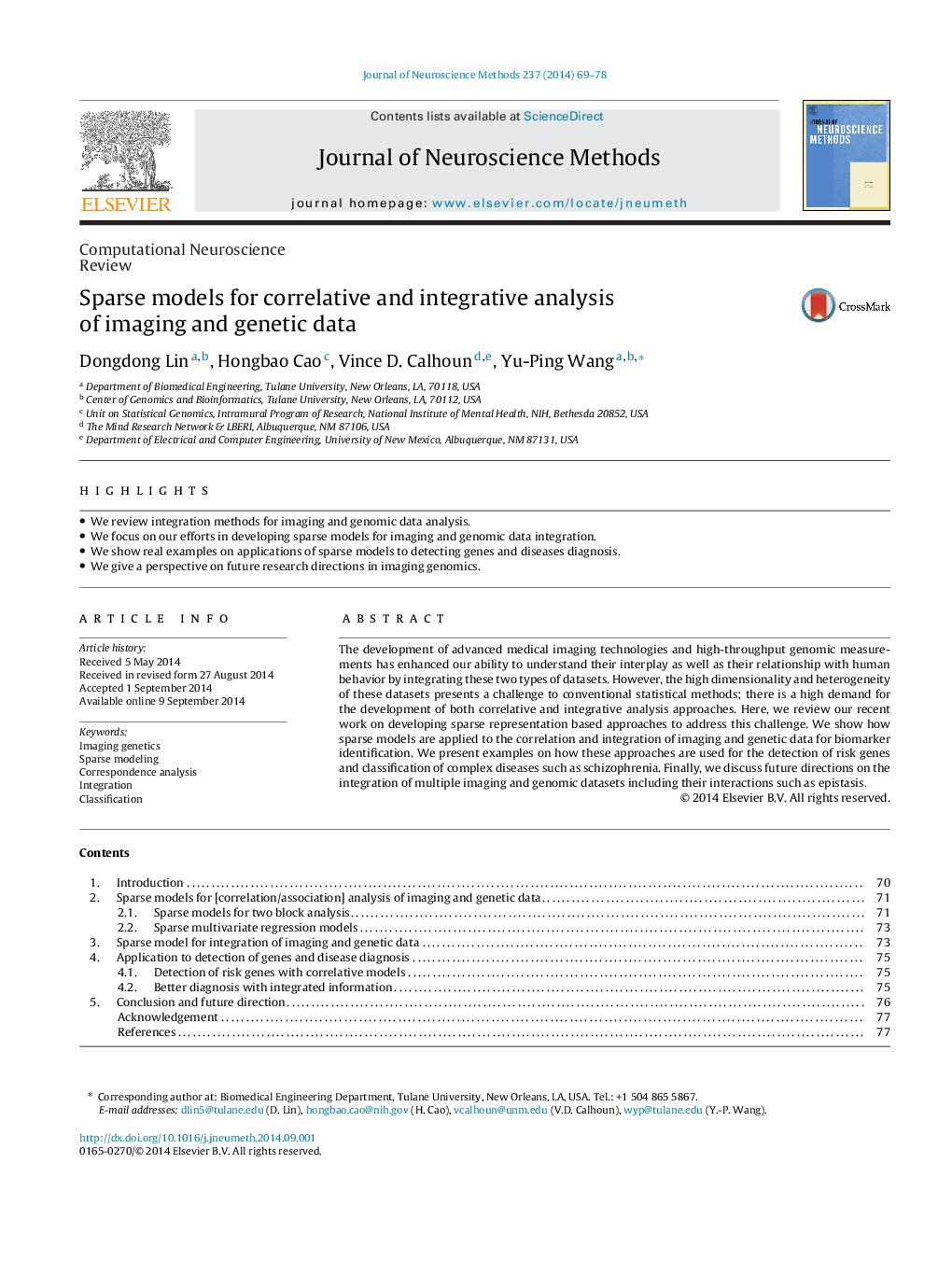| Article ID | Journal | Published Year | Pages | File Type |
|---|---|---|---|---|
| 6268464 | Journal of Neuroscience Methods | 2014 | 10 Pages |
â¢We review integration methods for imaging and genomic data analysis.â¢We focus on our efforts in developing sparse models for imaging and genomic data integration.â¢We show real examples on applications of sparse models to detecting genes and diseases diagnosis.â¢We give a perspective on future research directions in imaging genomics.
The development of advanced medical imaging technologies and high-throughput genomic measurements has enhanced our ability to understand their interplay as well as their relationship with human behavior by integrating these two types of datasets. However, the high dimensionality and heterogeneity of these datasets presents a challenge to conventional statistical methods; there is a high demand for the development of both correlative and integrative analysis approaches. Here, we review our recent work on developing sparse representation based approaches to address this challenge. We show how sparse models are applied to the correlation and integration of imaging and genetic data for biomarker identification. We present examples on how these approaches are used for the detection of risk genes and classification of complex diseases such as schizophrenia. Finally, we discuss future directions on the integration of multiple imaging and genomic datasets including their interactions such as epistasis.
